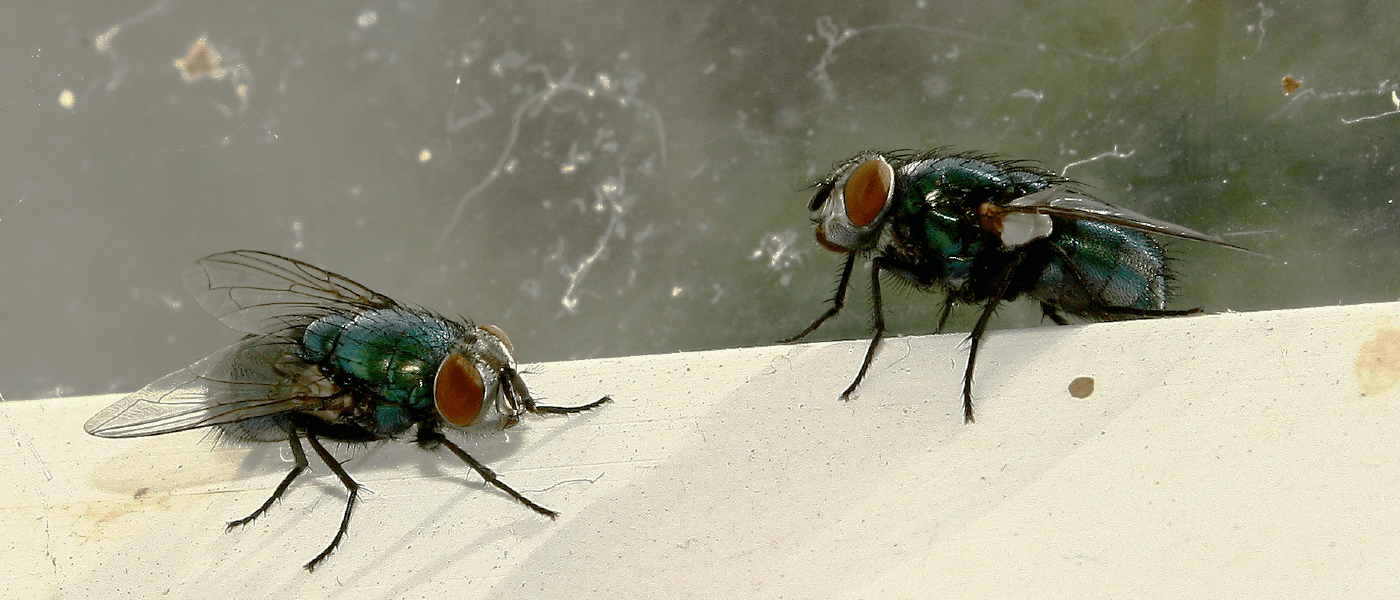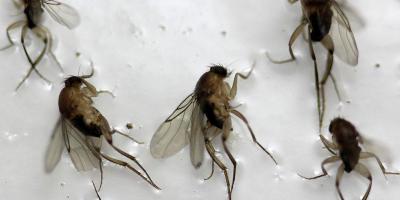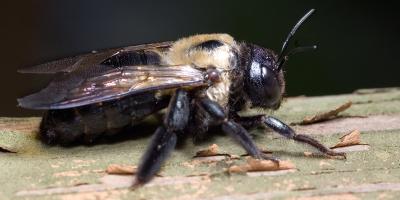Got Flies?

Believe it or not, there’s actually a bit of folksy wisdom nestled in the old expression, “Time flies like an arrow, but fruit flies like a banana.” Fruit flies do like bananas and other ripe produce – that much is obvious – but that’s because fruit flies and other flies are what’s considered a “source pest.” That means that they aren’t necessarily there for the house itself, but for a specific attractant within the home that can usually be easily removed.
In the case of fruit flies, that source is food. Other types of flies are attracted to better breeding grounds. The good news is that, theoretically speaking, it is usually the easiest thing in the world to get rid of flies – just remove the source they’re attracted to. Where theory meets practice, however, is that it’s seldom simple to identify what exactly the flies are being drawn to.
Take a Look at the Top Targets, Depending on Type of Fly
Remember, different flies are attracted to different “sources.” Here are some specific examples that might help you get rid of a fly problem in your home:
Fruit flies: Their name says it all. If you’ve got fruit flies, try placing the ripe fruits or vegetables they’re drawn to into either the refrigerator or in an airtight container. Leaving them on the counter or kitchen island makes them prime real estate for fruit flies to easily alight and eat. Also keep in mind that they could be just as attracted to the banana peel and apple core you threw in the garbage a few days ago, so it’s equally good practice to take out the trash every evening.
Green bottle flies: Speaking of trash, fruit flies aren’t the only ones buzzing around the dumpster: Bigger than the common housefly, green bottle (or “blow”) flies also feed on garbage – especially food waste like meat, fruits and vegetables. That’s also where they like to lay their eggs. Take out the trash regularly, making sure cans have lids (both inside and outside the house) and try putting fly strips up around windows.
Drain flies: These flies reproduce in standing water, which you’ll often find around in drains that haven’t been used in several days. They could also be symptomatic of a more complicated plumbing issue. Clean and thoroughly drain any pipes and traps, eliminating any buildup that has accumulated.
Fungus Gnats: These flying nuisance pests live most of their lives in the larval stage in soil, so if you’re seeing them in your house you might check your houseplants. Fungus gnats thrive in over-watered planters. Avoiding over-watering these plants should take care of the problem over time, and a good first step (for both the flies and your plant) would be to remove some of the excess soil and replace it with fresh, dry soil, making sure that there is at least an inch of it at the top, encasing the larvae underneath.
Put a Plan in Place
But how do you know what flies have taken up residence in your home without a degree in entomology? Obviously for an ultra-targeted approach, you would want to identify which ones you’re dealing with, but for the most part, eliminating flies of all different stripes essentially involves removing food and reproductive sources, and that almost always means more vigilant sanitation.
To start, clean up spilled food or drink immediately, take the garbage out regularly and often, and keep trash cans covered or lidded at all times, while also cleaning them periodically to remove any buildup of spills or leaks from the garbage bags.
Effective exclusion is also a must. Check screens on windows and vents and patch any holes. Seal up cracks and crevices around windows, under soffits and around ventilation openings. Sealing up fresh food in airtight containers is also non-negotiable in the fight to keep flies out.
Need some help with winged nuisances? Contact us to speak with a customer support specialist.



